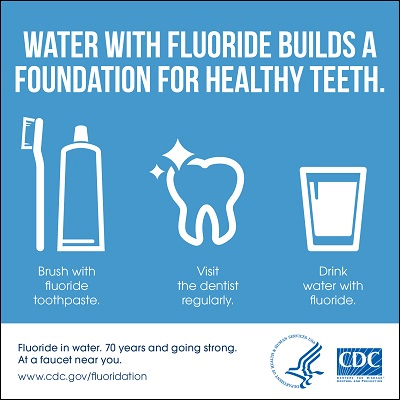
It’s holiday season again, or as my hygienist calls it, “cavity season”. Because candy is so ubiquitous this time of year, I thought I should give some helpful advice for all of us (dentists included) that appreciate something sweet every now and then.
- Try your best to avoid those stickier candies like taffies and Sour Patch Kids. The key is getting the sugar out of your mouth as quickly as possible and these sticky sweets tend to stick around a lot longer.
- Eat your candy quickly. Sucking on Jolly Ranchers, for instance, for an extended period of time never lets your mouth cleanse itself and will predispose you to a higher risk for cavities.
- If you have to choose a candy that is best for your teeth, chocolate is a good choice. Although any amount of sweets is hard on your teeth and your diet, there are compounds in chocolate that are antimicrobial and even helps fight plaque! Additionally, chocolate rinses away quickly and doesn’t linger.
- Try and avoid hard candies. They stick around longer and you will not be tempted to bite into them which can break your teeth. Sometimes we can fix broken teeth but sometimes they break so badly that there is nothing a dentist can do for it. Additionally, if you have existing dental work in your mouth, hard candies are very rough on existing dental work.
- Rinse after you eat sugar! Try and avoid brushing right away as your teeth will be sitting in an acidic environment and brushing softened tooth structure will erode your teeth a lot quicker.
- Sugar free gums (especially with xylitol, an alternative sugar) will help bring your risk for tooth decay down! It even works great as a trick or treat bag stuffer.
- Lastly, a friendly reminder for patients with multiple items on their treatment plans: if you have any outstanding insurance benefits left over at the end of the year, it is use it or lose it season. Most patient’s insurance rolls over at the end of the year so keep that in mind to help maximize your insurance reimbursement!
If you have any questions or would like to schedule an appointment to discuss your personal situation, please give us a call today at 360-629-7229.


 If you’re a nerd about teeth like I am, you may be excited about a new FDA-approved product, silver diamine fluoride, that we recently made available at Cascadia Dentistry. The compound, when applied appropriately, works to arrest existing cavities. Because of its ability to stop decay (after multiple applications), it is a great alternative for treating some types of tooth decay that were previously untreatable or were difficult and sometimes traumatic to treat.
If you’re a nerd about teeth like I am, you may be excited about a new FDA-approved product, silver diamine fluoride, that we recently made available at Cascadia Dentistry. The compound, when applied appropriately, works to arrest existing cavities. Because of its ability to stop decay (after multiple applications), it is a great alternative for treating some types of tooth decay that were previously untreatable or were difficult and sometimes traumatic to treat. 
 environment and sets the stage for tooth decay.
environment and sets the stage for tooth decay. I recently had a discussion with a friend of mine as I gave my son his daily fluoride drops. After I was done, my friend looked at me with a puzzled expression and asked me why I would give my son fluoride because she had heard that fluoride is toxic. As a dentist, I hear this view fairly often and it’s frustrating because I immediately want to start presenting all the research touting the major benefits of fluoride supplements in children without coming off as overbearing. In my friends’ case, I very confidently answered her that I was doing my son a favor by giving him fluoride supplements to reduce his future risk for tooth decay because our local drinking water is not fluoridated. Because this is such a common concern, I’d like to take a moment to further explain myself and offer a few points for parents of young children to consider.
I recently had a discussion with a friend of mine as I gave my son his daily fluoride drops. After I was done, my friend looked at me with a puzzled expression and asked me why I would give my son fluoride because she had heard that fluoride is toxic. As a dentist, I hear this view fairly often and it’s frustrating because I immediately want to start presenting all the research touting the major benefits of fluoride supplements in children without coming off as overbearing. In my friends’ case, I very confidently answered her that I was doing my son a favor by giving him fluoride supplements to reduce his future risk for tooth decay because our local drinking water is not fluoridated. Because this is such a common concern, I’d like to take a moment to further explain myself and offer a few points for parents of young children to consider. On the other hand, dental decay is endemic and is a very serious health concern that many children and adults face. Dental decay can lead to pain and premature tooth loss and can be debilitating to many children and adults alike. Yet fluoride consumed as a child brings down that persons’ lifelong risk for dental decay in their permanent teeth. Simply put, a child who orally consumes fluoride at the recommended levels, results in fluoride integrating into that child’s adult teeth as they develop which helps reduce future risk for tooth decay – certainly a major benefit to that child as they age.
On the other hand, dental decay is endemic and is a very serious health concern that many children and adults face. Dental decay can lead to pain and premature tooth loss and can be debilitating to many children and adults alike. Yet fluoride consumed as a child brings down that persons’ lifelong risk for dental decay in their permanent teeth. Simply put, a child who orally consumes fluoride at the recommended levels, results in fluoride integrating into that child’s adult teeth as they develop which helps reduce future risk for tooth decay – certainly a major benefit to that child as they age.